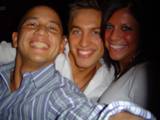No Imagination by Louis Evan Palmer

What
if
Imagination
doesn't
exist?
But what change would be wrought on the universe if, in fact, there was no such thing as imagination? What if every single thing we conceive is based on perceptions or remembrances, however faulty, of other realities, or reflect components of this reality that usually are hidden.
What if the First Law of Thermodynamics applies to all non-physical forms and energies - nothing is created or destroyed, it is merely transformed. In this context, imagination cannot create anything new and the transformation consists of perceiving, evaluating, remembering and judging.
Therefore, we might think that ancient peoples do not talk in metaphors, or "imagine" anything, but rather try to describe phenomena that are beyond their understanding. Spaceships, alien lifeforms, collisions with space objects - all events, all described by them in language that might be interpreted thousands of years later through the prism of several translations and worldview transformations as myths or leaps of imagination.
Imagination could never, in any case, be completely new or we wouldn't understand it or even recognize it. Yet, if it is all there already and one is seeing an existant object or possibility for the first time, although it might appear that the perceiver is creating something via imagination, maybe instead they're discerning something.
It might seem like a word game at this point, imagination is now defined as creative, or superior, discernment. But the key idea is that nothing new is being brought forth, it is an uncloaking, or a clearing away, that allows one to discern this thing and speak about it. If so, then imagination becomes concerned with transformations of existing orders, the solidification of ephemeral mental darts and dashes, and the shaping of the potential for good and bad.
It might be reformulated as "discernment shaped by intent" - which then makes it our duty to have the best possible "intent" so that our power, which ultimately is all power, is directed towards truth and not towards illusion.
No imagination, no excuses.
Louis Evan Palmer, No Imagination, The Way It Can Be, http://twicb.blogspot.com
Copyright Louis Evan Palmer







